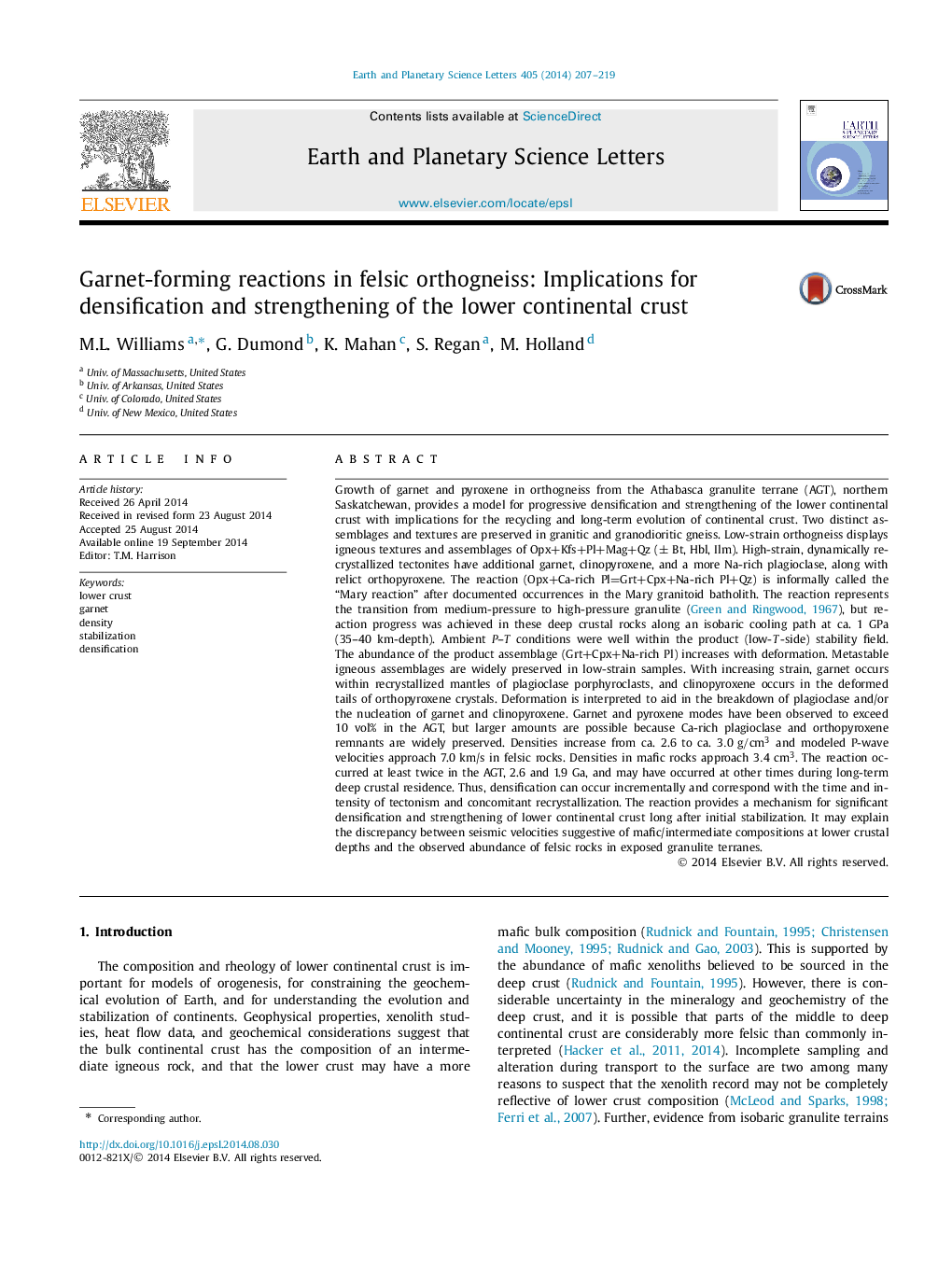| Article ID | Journal | Published Year | Pages | File Type |
|---|---|---|---|---|
| 6428937 | Earth and Planetary Science Letters | 2014 | 13 Pages |
â¢Rocks in the Athabasca granulite terrane preserve a variety of garnet-forming reactions.â¢Petrologic modeling suggests that average Opx-granitoids can develop up to 20 vol% garnet.â¢The reactions are enhanced by deformation (dynamic recrystallization) of the igneous protoliths.â¢The reactions may account for densification of lower continental crust long after stabilization.
Growth of garnet and pyroxene in orthogneiss from the Athabasca granulite terrane (AGT), northern Saskatchewan, provides a model for progressive densification and strengthening of the lower continental crust with implications for the recycling and long-term evolution of continental crust. Two distinct assemblages and textures are preserved in granitic and granodioritic gneiss. Low-strain orthogneiss displays igneous textures and assemblages of Opx+Kfs+Pl+Mag+Qz (± Bt, Hbl, Ilm). High-strain, dynamically recrystallized tectonites have additional garnet, clinopyroxene, and a more Na-rich plagioclase, along with relict orthopyroxene. The reaction (Opx+Ca-rich Pl=Grt+Cpx+Na-rich Pl+Qz) is informally called the “Mary reaction” after documented occurrences in the Mary granitoid batholith. The reaction represents the transition from medium-pressure to high-pressure granulite (Green and Ringwood, 1967), but reaction progress was achieved in these deep crustal rocks along an isobaric cooling path at ca. 1 GPa (35-40 km-depth). Ambient P-T conditions were well within the product (low-T-side) stability field. The abundance of the product assemblage (Grt+Cpx+Na-rich Pl) increases with deformation. Metastable igneous assemblages are widely preserved in low-strain samples. With increasing strain, garnet occurs within recrystallized mantles of plagioclase porphyroclasts, and clinopyroxene occurs in the deformed tails of orthopyroxene crystals. Deformation is interpreted to aid in the breakdown of plagioclase and/or the nucleation of garnet and clinopyroxene. Garnet and pyroxene modes have been observed to exceed 10 vol% in the AGT, but larger amounts are possible because Ca-rich plagioclase and orthopyroxene remnants are widely preserved. Densities increase from ca. 2.6 to ca. 3.0 g/cm3 and modeled P-wave velocities approach 7.0 km/s in felsic rocks. Densities in mafic rocks approach 3.4 cm3. The reaction occurred at least twice in the AGT, 2.6 and 1.9 Ga, and may have occurred at other times during long-term deep crustal residence. Thus, densification can occur incrementally and correspond with the time and intensity of tectonism and concomitant recrystallization. The reaction provides a mechanism for significant densification and strengthening of lower continental crust long after initial stabilization. It may explain the discrepancy between seismic velocities suggestive of mafic/intermediate compositions at lower crustal depths and the observed abundance of felsic rocks in exposed granulite terranes.
